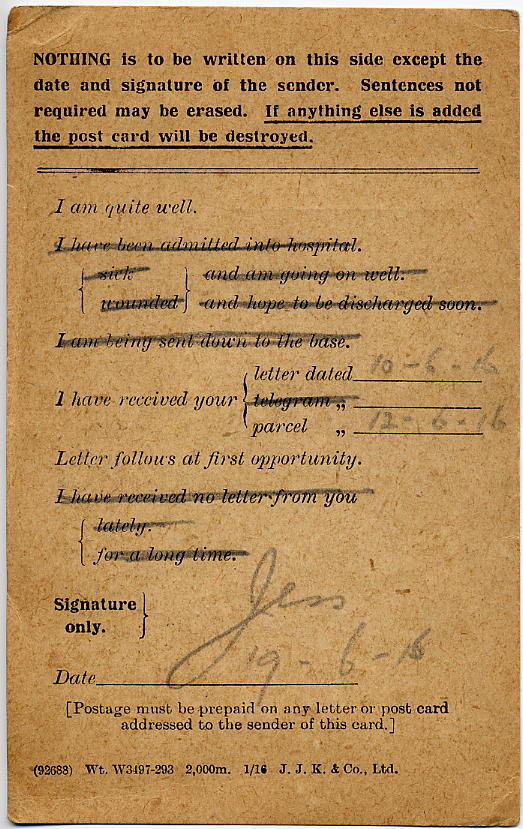E.J.B. Green
Service no. 2637
Gunner, Royal Field Artillery, 236th Bde.
Killed in action 6 October 1916, aged 32
Remembered at Thiepval Memorial, France
This identification was made by Chris Burge, who writes:
Edwin John Green was born in the summer of 1883, the fifth child of parents Edward and Eleanor Green when the family was living in Camberwell. By 1891 there had been another child born and by 1901 Edwin was one of eight siblings, and like his father, Edwin worked as a slater. The family was then living at 104 Lyndhurst Grove, Camberwell.
By the time of the 1911 census, Edwin, along with sister Ada and brothers Trevor and Clarence, was still living with parents Edward and Eleanor. Edwin’s father, now 65, was still working as a slater but Edwin was now carman, his younger brother Trevor a shorthand typist and Clarence a clerk. The six adults occupied nine rooms at 49 Lyndhurst Grove, Camberwell.
Edwin married Harriet Jane Porter in 1913 and their first child, Edwin Frederick Burlington Green, was born later that year.
Despite Harriet expecting a second child, Edwin followed his brother Trevor’s example and joined the Army in May 1915. Edwin volunteered at 105 Holland Road (now Minet Road), Brixton, the HQ of the 6th London Brigade of the Royal Field Artillery, Territorial Force (the batteries of this brigade were later re-designated as the 236th Brigade, RFA). So began a long and intensive training period for Gunner, 2632, E.J.B Green. Edwin and Harriet’s second child, Arthur Percy Burlington Green, was born two months later, on 6 July 1915.
Months past and Edwin was still in England. His departure to France was delayed until 1916, possibly the 13 June 1916, if the records of Gunner 2630 Henry Eugene Saunders of Stockwell are a guide. Harriet was expecting her third child at his time, and Alice Eleanor Burlington Green was born on 3 August 1916. The grim news from the Battle of the Somme must have filled Harriet with dread. It was in August that Edwin’s battery joined the Somme offensive.
Edwin had been in action in mid August and again in September between periods of relief and had returned to action at the beginning of October 1916 on the Somme. A time referred to as the Battle of Transloy Ridge. It was here that Edwin John Burlington Green was killed. Very unusually for an ‘other ranks’ soldier, Edwin’s death is recorded in the brigade’s war diary on 6 October with the battery position near ‘High Wood’.
C/236 Btty were shelled in their new position … and had to evacuate it. Gnr Green E.J.B was killed and one wounded ( Sgt Irons). Two or three others were buried but successfully dug out and remained at duty.
Harriet suffered further heartache when her baby daughter Alice died in October 1918, close to the anniversary of Edwin’s death. Harriet Jane Green remained in Lambeth for many years, passing away in 1972, aged 87.


